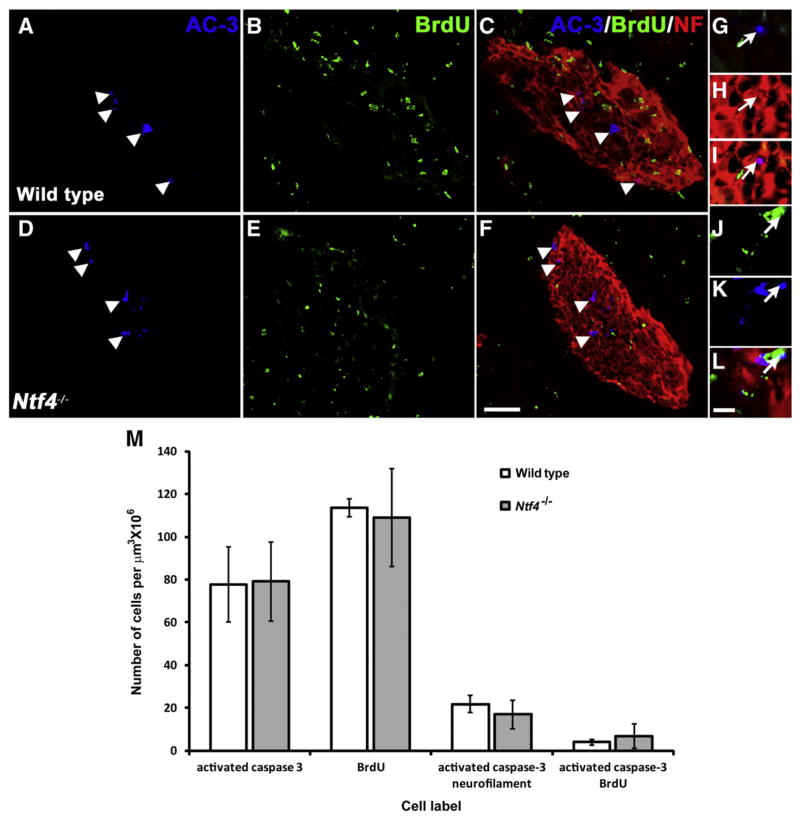Fig. 5.
Triple immuno-fluorescence labeling was used to identify dying cells (blue: rabbit polyclonal anti-activated caspase-3 (AC-3)), dividing cells (green: rat monoclonal anti-BrdU), and differentiated neurons (red: anti-neurofilament (NF)) in the developing geniculate ganglia of wild type (A–C) and Ntf4−/− (D–F) mice at E11.5. Several cells are positively labeled for the cell death marker, AC-3 (white arrowheads, A, C, D, F). A composite image for all three antigens allowed for the study of co-labeled populations (C, F). A high magnification image of a cell double-labeled for NF and AC-3 is shown at the magnification used for counting (white arrows, G–I). A few cells were labeled with both BrdU and AC-3 (white arrows, J–L) in wild type and Ntf4−/− mice, indicating that precursors were dying at E11.5. No differentiated neuronal cells were still dividing. Scale bar in F=50 μm and applies to A–F; scale bar in L=10 μm and applies to applies to G–I. Quantification of these labels demonstrates that NT-4 does not influence cell death by activating caspase-3 at E11.5 (M). Number of geniculate ganglion cells positively labeled for the antigens AC-3, BrdU and double-labeled for NF and AC-3 was plotted for wild type and Ntf4−/− embryos. The same number of cells was positively labeled for AC-3 in Ntf4−/− compared to wild type ganglia. No significant difference was observed in the number of cells positively labeled for BrdU or double-labeled with BrdU and AC-3 between wild type and Ntf4−/− ganglia. Thus, the neurotrophin NT-4 regulates geniculate ganglion cell death without activating caspase-3 at E11.5.

